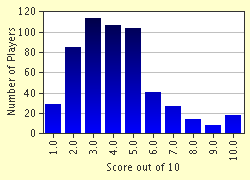Quiz Answer Key and Fun Facts
1. Flags : Given the history of colonialisation of America by the Pilgrims from Britain, you would expect that more flags of the US states to carry the symbol of the Union Jack. However, only one of them does so; which one?
2. History : Neville Chamberlain will go down in history as the British Prime Minister who tried in vain to appease Hitler's bully tactics, largely symbolised by his 'Peace In Our Time' speech. However, even before him, there have been other examples of appeasement in the face of naked aggression - a good example is the Hoare-Laval Pact (1935), named after the British and French Foreign Ministers who negotiated it. Which country were they trying to appease in this case?
3. Literature : Composed in 1961 and first performed in 1962, 'War Requiem' is a choral work by the British composer Benjamin Britten. It is based on a series of 9 poems by this WWI poet, who penned such memorable works like 'Dulce et Decorum est' and 'Anthem for Doomed Youth'. Who is he?
4. Music : Composed between 1914 to 1916, 'The Planets' is an orchestral suite by Gustav Holst, which consists of seven movements, each dedicated to one of the planets of the Solar System. Since there are eight planets, which one is left out?
5. Medicine: In 1937, the Nobel Prize for Physiology or Medicine was awarded to the Hungarian biochemist, Albert von Szent-Gyorgyi, for his pioneering work (in the 1920s) on the condition known as Addison's disease. Which organ in the body is primarily affected by this condition?
6. Mythological Beasts : It is a monster that supposedly lurks in the deep forests of Asia. It has the head of a human but body of a lion, with a tail composed of poisonous darts, which it releases in a deadly volley at its prey. What is its name?
7. Poetry:
'I am borne darkly, fearfully, afar;
Whilst, burning through the inmost veil of Heaven,
The soul of Adonais, like a star,
Beacons from the abode where the Eternal are.'
This poem, 'Adonais', was written by Percy Shelley in 1821, in tribute to a leading figure of Romanticism who had died of tuberculosis in Rome that same year. Who was it?
8. Prehistoric Beasts: You are a zookeeper in the London Zoo, and have just been told that advanced genetic cloning technology has created two Smilodons. In which of the folllowing enclosures would you most likely exhibit them (if at all)?
9. Art : It was said that when the great Russian novelist Fyodor Dostoyevsky visited Dresden, he was so captivated by the painting 'The Sistine Madonna' which was displayed in the Gemaldegalarie that he returned to stare at it day after day. Which famous Renaissance painter was responsible for such a wondrous creation, accomplished around 1513?
10. Comics : As usual, a less serious question at the end of the quiz. What is the name of Garfield's little teddy bear?
Source: Author
taygt
This quiz was reviewed by FunTrivia editor
natsim before going online.
Any errors found in FunTrivia content are routinely corrected through our feedback system.


